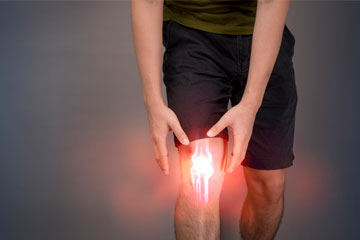
The most common type of arthritis, osteoarthritis (OA) is characterized by the slow breakdown of cartilage that acts as a cushion and protects the ends of bones in the joints. The degeneration of cartilage results in joint swelling, stiffness and pain that tends to worsen over time. The condition can affect any joint, but usually impacts the knees, hips, hands, and spine. The incidence of OA has increased with the prevalence of obesity. Added weight puts extra pressure and stress on weight-bearing joints, such as the knees and hips. Being just 10 pounds overweight puts an extra 15-50 pounds of pressure on the knees. This increases the chances of developing osteoarthritis. In addition, excess fat speeds the destruction of cartilage.
Impact of Overweight on Osteoarthritis
Here’s how being overweight impacts OA –
- Increases Pressure on the Joints – Extra pounds can be hard on joints. Being overweight stresses and damages the joints. For instance, the knees of healthy-weight people absorb about 1.5 pounds of force with every step. If you add OA to the mix – the knees take even more of a beating. When a person goes up and down stairs or squats to pick something up, the pressure increases dramatically. In people with OA, excess fat deposits create inflammation in addition to the excess stress it puts on the joints.
- Causes Inflammation – Excess fat is chemically active and tends to release inflammation-causing proteins that travel through the whole body and makes it a little inflamed everywhere, including the joints. Continuous, low-grade inflammation increases the joints capacity to develop OA.
- Disease Progression – Osteoarthritis symptoms are more severe in obese people than in those people who weigh less. People who are overweight are more likely to need hip or knee replacement. Other complications may also occur after surgery. Physicians will recommend reducing weight before surgery.
- Results in Other Health Problems – The problems related to excess fat is not limited only to the joints. It can also cause other serious conditions such as cardiovascular diseases, stroke, diabetes, high blood pressure, high blood sugar and depression. Obese people with OA are almost three times more likely than those in the general population to have metabolic syndrome. The combination of inflammation and lack of exercise creates a cycle of weight gain, disability, depression and poor health. Regular exercise and a healthy diet the best ways to address these concerns.
Being overweight or obese makes OA more disabling. When compared to people with a healthy weight, obese people with OA are less physically active and at a higher risk of becoming disabled. Losing weight can make performing day-to-day functions easier. In fact, losing just 10 percent of body weight can cut arthritis pain in half. Healthy weight loss can also reduce blood pressure and reduce the risk of developing diabetes and heart disease.
Also Read – Foods to Avoid and to Include in Your Diet If You Have Arthritis
